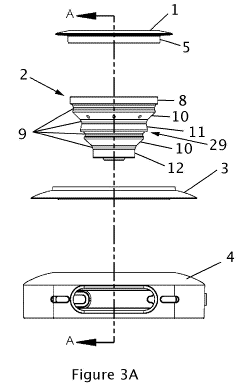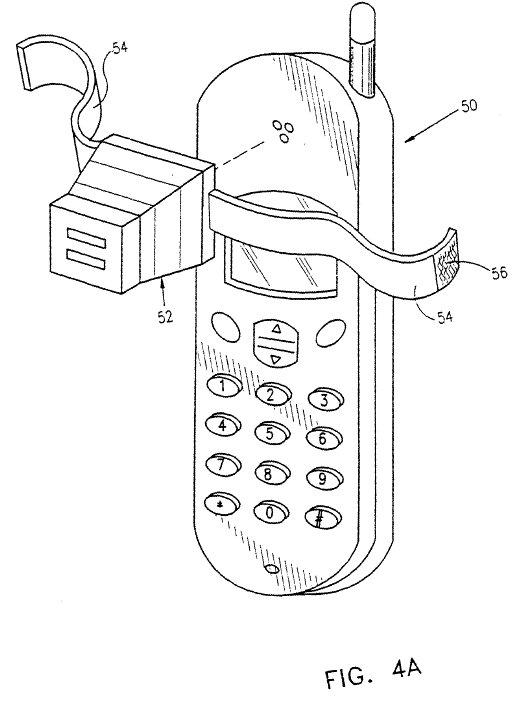Is a claim limitation functional or merely an intended use?
| November 21, 2019
Quest USA Corp. v. PopSockets LLC (Patent Trial and Appeal Board)
August 12, 2019
Zado, Kaiser and Margolies (Administrative Patent Judges)
Summary:
This case is a Final Written Decision by the Patent Trial and Appeal Board of an inter partes review (“IPR”) filed by Quest USA Corp (“Petitioner”) against U.S. Patent No. 8,560,031 owned by PopSockets LLC (“Patent Owner”). One issue in the IPR was whether a limitation in claim 9 of the ‘031 patent is a functional limitation that should be given patentable weight or whether the limitation is just an intended use that is not given patentable weight. The noted limitation is a securing element “for attaching the socket to the back of the portable media player.” As part of its finding that the claims are anticipated, the PTAB held that the noted limitation is an intended use and that Grinfas is inherently capable of satisfying the noted limitation.
Details:
The ‘031 patent is to an “Extending Socket for Portable Media Player” and describes extending sockets for attaching to the back of a portable media player or media player case. The extending sockets can be used for, e.g., storing headphone cords and preventing cords from tangling. Figure 3A from the ‘031 patent is provided:

Claims 9-11, 16 and 17 of the ‘031 patent are at issue in this IPR. Claim 9 is provided below, and the limitation relevant to this summary is highlighted:
9. A socket for attaching to a portable media player or to a portable media player case, comprising:
[a] a securing element for attaching the socket to the back of the portable media player or portable media player case; and
[b] an accordion forming a tapered shape connected to the securing element, the accordion capable of extending outward generally along its [axis] from the portable media player and retracting back toward the portable media player by collapsing generally along its axis; and
[c] a foot disposed at the distal end of the accordion.
Petitioner asserted that claims 9-11, 16 and 17 are anticipated by Grinfas (UK Patent Application GB 2 316 263 A). Grinfas discloses a collapsible sound conduit for attaching to a cellular telephone. The idea of Grinfas is to provide a spaced distance between the telephone and a user’s head to reduce radiation exposure. Figures 2, 3 and 4A of Grinfas are provided below:



Grinfas discloses using an adhesive pad or straps to attach the collapsible sound conduit to the asserted media player. Patent Owner did not dispute that Grinfas discloses “a securing element” for attaching the socket to the earpiece of a telephone. However, Patent Owner, attempting to characterize the limitation as functional, argued that Grinfas does not disclose a securing element “for attaching the socket to the back of the portable media player” as recited in claim 9.
The PTAB stated that the issue is whether the noted limitation recites “1) functional language that must be given patentable weight, or 2) an intended use that is not limiting.” The PTAB also provided these two legal principles:
(1) “Where all structural elements of a claim exist in a prior art product, and that prior art product is capable of satisfying all functional or intended use limitations, the claimed invention is nothing more than an unpatentable new use for an old product.” Bettcher Indus., Inc. v. Bunzl USA, Inc., 661 F.3d 629, 654 (Fed. Cir. 2011).
(2) “[A] prior art reference may anticipate or render obvious an apparatus claim—depending on the claim language—if the reference discloses an apparatus that is reasonably capable of operating so as to meet the claim limitations, even if it does not meet the claim limitations in all modes of operation.” ParkerVision, 903 F.3d at 1361.
Petitioner argued that the “for attaching” language merely recites an intended use and is not entitled to patentable weight and that the structures disclosed in Grinfas are inherently capable of attaching to the back of a phone or phone case. The PTAB agreed with Petitioner that Grinfas is inherently capable of performing the function of attaching the asserted socket to the back of the portable media player. They relied on expert testimony that stated that the adhesive pad described in Grinfas has an adhesive that would stick to either side of the telephone, and that the straps could be used to fasten the sound conduit to either side of a telephone.
Patent Owner did not dispute that Grinfas’s securing elements are inherently capable of attaching the collapsible sound conduit to the back of a telephone. Patent Owner argued that Grinfas does not actually disclose the function of attaching to the back of a phone, and that the expert failed to provide evidence that the claimed function is necessarily present in Grinfas. The PTAB stated that Petitioner is not required to show the claimed function is actually performed or must be performed.
Patent Owner further argued that the “for attaching the socket to the back” limitation is entitled to patentable weight “because … this language recites a fundamental characteristic without which the invention would be of little use.” However, the PTAB looked at the specification and the prosecution history and concluded that the limitation does not recite a fundamental characteristic without which the invention would be of little use. The PTAB said that the specification did not describe a securing structure as being specific for attaching to the back, as opposed to some other portion, of a portable media player or case. The PTAB further stated that the specification indicates that the invention would be useful when attached to the media player generally, but does not specify attachment to the back as a requirement.
Thus, the PTAB concluded that Grinfas discloses a securing element inherently capable of being attached to the back of a portable media player, and that Grinfas discloses the securing element limitation of claim 9. The PTAB also found that Grinfas discloses all other limitations of claim 9 and that Grinfas anticipates all of the disputed claims.
Comments
The opinion pointed out that there is a risk in choosing to define an element functionally in an apparatus claim. A functional claim limitation in an apparatus claim may be considered as an intended use, and the prior art will satisfy the limitation if it is reasonably capable of performing the function.
The ‘031 patent also included a method claim (claim 16). The method claim recited attaching the socket to a portable media player; selectively extending the socket; and selectively retracting the socket. However, the method claim did not recite attaching the socket to the “back” of the portable media player.
It appears from the PTAB decision that the patent owner may have had a chance to avoid anticipation if they could actually show that the function “recites a fundamental characteristic without which the invention would be of little use.” The decision appears to give weight to the patent owner’s argument that if the function “recites a fundamental characteristic without which the invention would be of little use,” then the prior art must actually disclose performing the function.


